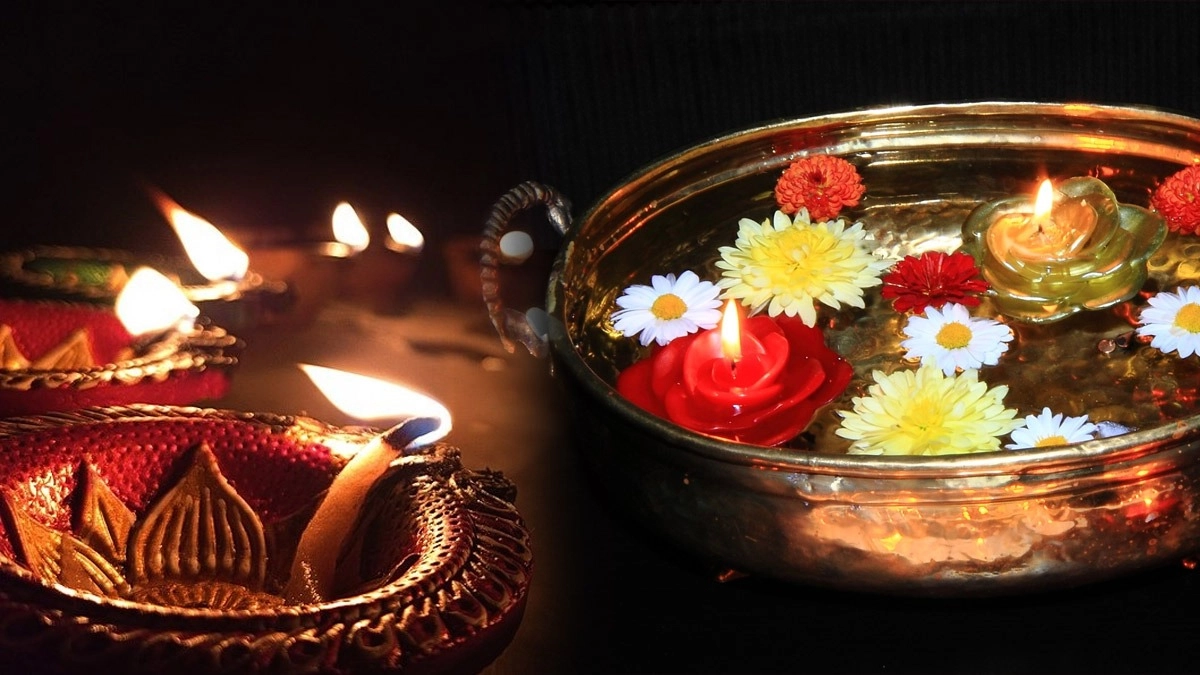
Performing Puja and Arati During Akshaya Tritiya
Deep spiritual importance comes from performing puja and arati on Akshaya Tritiya, a holy Hindu holiday that is observed with zeal and dedication. Akshaya Tritiya, which occurs on the third lunar day of the bright half of the Hindu month of Vaishakha, is a season of abundance, auspiciousness, and perpetual benefits. Akshaya Tritiya observances are incomplete without puja, or worship, and arati, or the waving of lit lamps. These practices represent the core of dedication, thankfulness, and reverence. Puja and arati establish a holy place where devotees connect with the divine and ask for blessings for prosperity, success, and abundance in their lives.
Cultural and Spiritual Significance
Performing puja and arati during Akshaya Tritiya holds profound cultural and spiritual significance:
- Divine Blessing Invocation: Lord Vishnu and Goddess Lakshmi are the two main deities whose blessings can be invoked for prosperity, success, and abundance through puja and arati. By participating in these ceremonies, devotees show their love and appreciation while requesting divine protection and direction on their spiritual and temporal travels.
- Restoration and Cleansing: The practices of puja and arati represent the restoration and cleansing of the body, mind, and soul. By cleansing the atmosphere and bringing positive vibrations and divine energies into it, the holy chants, offerings, and worship gestures create a holy place.
- Expression of Devotion: Offering prayers and pujas to the almighty is a sign of one’s devotion and submission. In order to receive the grace and blessings of the divine for their well-being and success, devotees offer their prayers, aspirations, and intentions with humility and sincerity.
- Communal Harmony: Because puja and arati are frequently performed in public places, devotees are encouraged to pray together and in unison. Worshiping together improves ties throughout the community and upholds cultural customs and values.
Process of performing Puja and Arati for Akshaya Tritiya
It takes careful planning and sincere dedication to do puja and arati on Akshaya Tritiya. The puja space is cleaned by devotees, who also gather necessary goods including lamps, incense, flowers, fruits, and spiritual symbols. Chanting of prayers and holy mantras is followed by the invocation of deities linked to wealth and success to start the puja. As expressions of respect and appreciation, people offer flowers, fruits, candies, and incense to the gods. Waving lit lamps, or arati, is a gesture of presenting light, purity, and good fortune to the gods. Before the gods, devotees wave lamps in a circular motion while singing and chanting devotions.
Rituals and Observances
- Preparation: Before performing puja and arati, devotees meticulously prepare the puja area, ensuring cleanliness and sanctity. They gather necessary items such as lamps, incense sticks, flowers, fruits, sweets, holy symbols like turmeric and vermillion, and offerings for the deities.
- Invocation of Deities: The puja begins with the invocation of deities associated with prosperity and abundance, such as Lord Vishnu and Goddess Lakshmi. Devotees chant holy mantras and prayers, inviting the divine presence into the puja space.
- Offerings: Devotees offer various items to the deities as gestures of devotion and reverence. These offerings typically include flowers, fruits, sweets, incense, and symbolic items representing prosperity and auspiciousness.
- Arati: Arati, or the waving of lighted lamps, is an integral part of puja rituals. Devotees wave lamps in circular motions before the deities, accompanied by the singing of devotional songs and chants. Arati symbolizes the offering of light, purity, and auspiciousness to the divine.
- Prayers and Mantras: Throughout the puja and arati, devotees recite prayers and mantras dedicated to the deities, expressing their aspirations, gratitude, and devotion. These holy chants create a serene and uplifting atmosphere, invoking divine blessings and grace.
- Devotional Offerings: Devotees offer their prayers, aspirations, and intentions with sincerity and humility, seeking the blessings of the divine for prosperity, success, and abundance in their lives. The puja and arati serve as opportunities for devotees to express their deep connection with the divine and cultivate a sense of devotion and surrender.
- Conclusion: The puja and arati conclude with expressions of gratitude and dedication, as devotees offer their prayers and homage to the deities. The holy rituals of puja and arati during Akshaya Tritiya reaffirm the devotees’ faith and commitment to the path of righteousness, prosperity, and spiritual fulfillment.
You can book Akshaya Tritiya Puja online by clicking the following link: https://vedicvaani.com/akshaya-tritiya-puja-havan .
Components of Akshaya Tritiya puja
The basic elements of the puja for Akshaya Tritiya are deeply rooted in tradition and devotion. The puja area is painstakingly prepared by devotees, who gather holy objects such as lamps, incense, flowers, fruits, and offerings that are symbolic. It is essential to invoke gods linked to wealth and success, such as Lord Vishnu and Goddess Lakshmi. With respect and appreciation, offerings of flowers, fruits, candies, and incense are made. Reciting prayers and holy mantras conjures up a holy atmosphere that calls out benefits from above. At vedic Vaani, we make all these components available to our devotees. You can purchase them by clicking on the website: https://vedicvaani.com/puja-items-and-pooja-services .
Practical Considerations
- Preparation: Adequate preparation is necessary for performing puja and arati effectively. Devotees must gather necessary items such as lamps, incense, flowers, fruits, sweets, and holy symbols, and ensure cleanliness and sanctity of the puja space.
- Devotional Attitude: A devotional attitude is essential for performing puja and arati with sincerity and reverence. Devotees must approach the rituals with humility, faith, and gratitude, cultivating a deep connection with the divine.
- Knowledge of Rituals: Familiarity with the rituals and mantras associated with puja and arati is crucial for their proper performance. Devotees may seek guidance from knowledgeable priests or spiritual mentors to ensure adherence to tradition and authenticity.
- Timing: Performing puja and arati at auspicious times, such as sunrise or sunset, enhances their efficacy and potency. Devotees may consult astrological calendars or spiritual authorities for guidance on the most favorable timings for worship.



